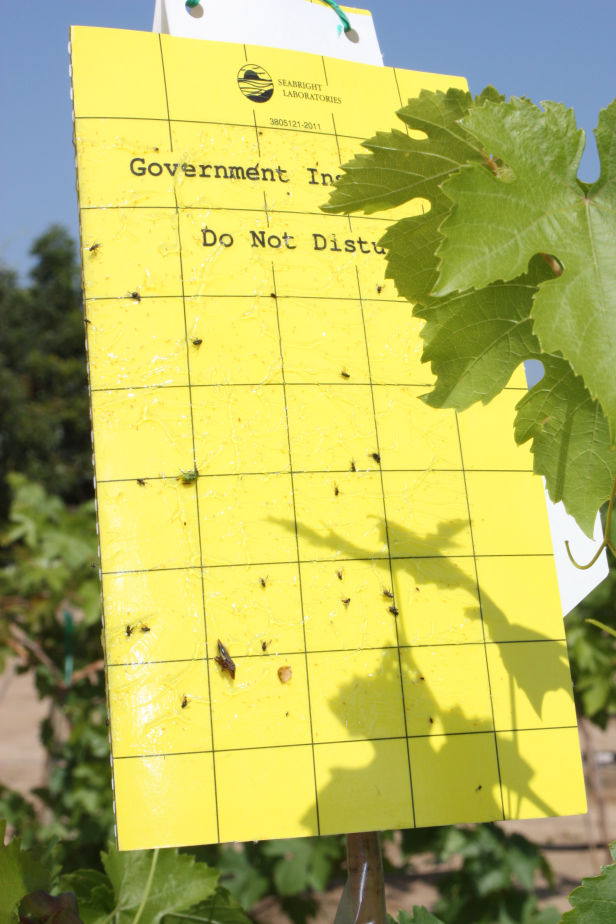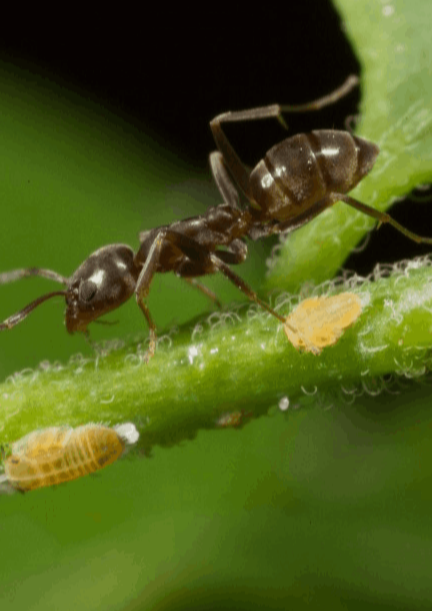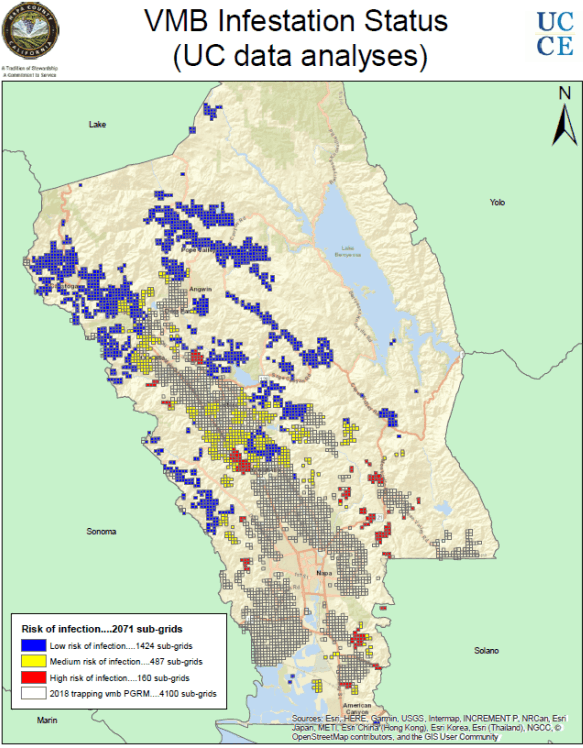home | people | research | extension | publications | extension resources
As extension entomologists, we regularly give presentations, write articles, develop online resources, or otherwise consult on issues related to arthropod invasions and vector-borne plant disease. Frequent topics include: sharpshooter and Pierce's disease biology and management, Asian citrus psyllid and huanglongbing biology and management, invasive pests in vineyards, arthropod pests in the garden or urban landscape, and development of pest or disease monitoring programs. Below are additional details for a few of our extension priorities, which largely track the major research themes in the lab. A more complete list of extension publications and other resources can be found here

Pierce's disease epidemiology & management. PD is a fatal disease of grapevines caused by a strain of the pathogenic bacterium, Xylella fastidiosa, which is transmitted by both native and invasive leafhoppers, such as the glassy-winged sharphooter (Homalodisca vitripennis, GWSS).
The following presentations provide an overview of Xylella diseases and PD epidemiology and management. We also maintain a blog that captures recent GWSS areawide monitoring results and other relevant information for Southern California grapegrowers

Asian citrus psyllid & huanglongbing. The invasive Asian citrus psyllid (Diaphorina citri; ACP), a vector of a bacterium associated with huanglongbing disease, has emerged as one of the primary threats to citrus worldwide. Our extension efforts focus on understanding the factors contributing to ACP invasion in Southern California, management in residential areas, and limiting impacts to nursery citrus.

Regulatory entomology. Another general area of extension efforts relates to the analysis of invasive species introduction and spread to help local, state, and federal regulatory agencies prioritize monitoring efforts. This has included invasive vineyard pests such as European grapevine moth (Lobesia botrana), other invasive moths, and vine mealybug (Planococcus ficus). These presentations describe the status of invasive pests in vineyards, and some of those affecting nurseries
100 Chapman Hall
Department of Entomology
University of California
Riverside, CA 92521
(951) 827-2246